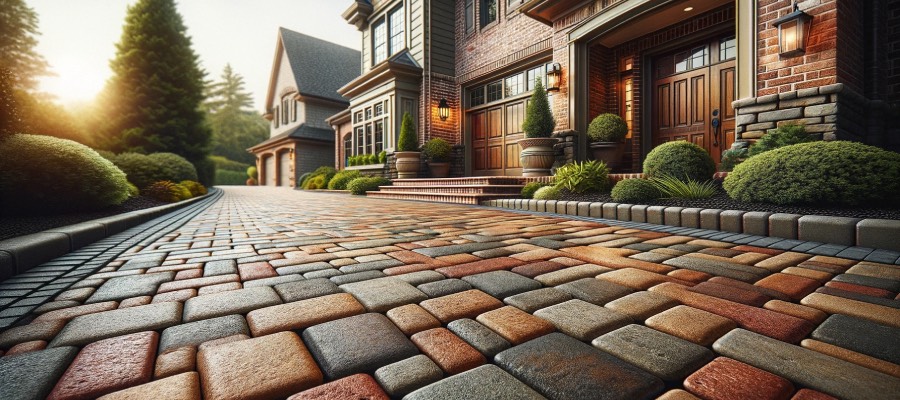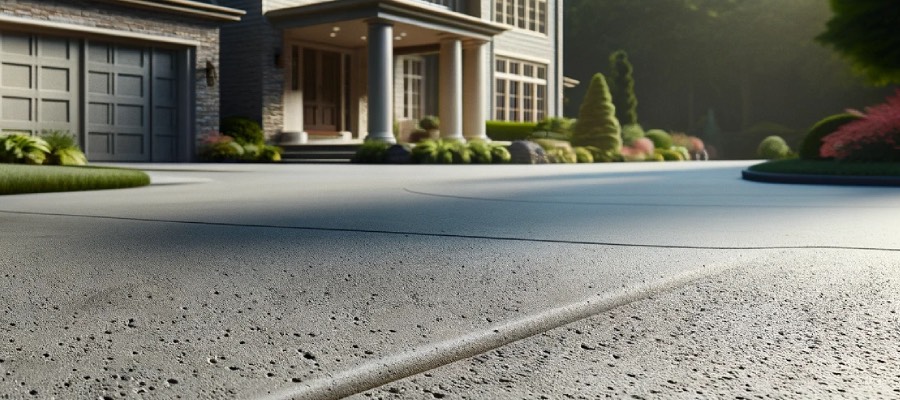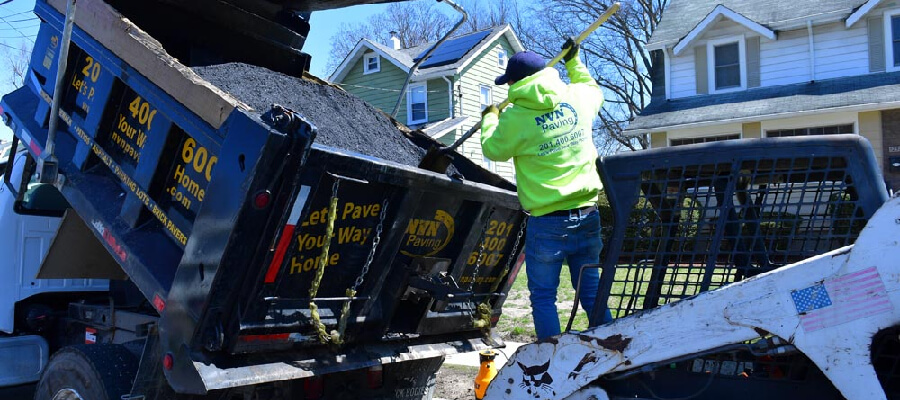Pavement repairs are essential for keeping your driveway looking spiffy and in good shape. The better you take care of your pavement, the longer it’ll last and the more you’ll get out of your investment. Plus, you’ll boost your curb appeal and make driving a whole lot smoother.
Different materials need different maintenance techniques, so let’s break it down by pavement type.

Fixing up a gravel driveway
Gravel driveways are super easy to install, but they can be a bit of a pain to maintain. Over time, ruts will form, and you might be tempted to just dump more gravel on top. But that’s only a temporary fix. So, what’s the real solution?
Here are a few ways to keep your gravel driveway in tip-top shape:
-
Compact and install like a pro
When you’re installing a gravel driveway, it’s crucial to prepare a solid bed for the gravel. If you don’t, you’ll start to see issues in just a few months. To get it right from the start, dig down about 12 inches and remove any roots or plant materials. Compact the soil using a plate compactor and then add the sub-base and sub-grade layers before pouring in your gravel.
-
Use stabilizing fabrics
Sometimes, even with proper prep, your driveway might still deteriorate. In that case, try using a geotextile material before installing the subgrade layer. This will create a layer between the surface and subgrade, reducing the chance of potholes and ruts.
-
Try stabilizer panels
Stabilizer panels provide a separation layer between different layers of your driveway and help hold the gravel in place. The panels have a honeycomb-like structure that traps the gravel, preventing washouts and absorbing force from vehicles, which can prevent ruts and potholes.

Mending a cracked asphalt pavement
Asphalt is popular for its long life and easy maintenance, but it’s important to choose the right products when repairing it. To fix cracks in your asphalt driveway, start by removing any weeds and cleaning the cracks with a strong garden hose. Apply weed killer to stop further growth, then fill the cracks with sand (if they’re deeper than a quarter-inch). Compact the sand, apply a patching compound, and let it cure. Finish up by applying a sealant and allowing it to dry.

Reviving your brick pavers
If you spot loose or damaged brick pavers, it’s time to get to work. First, mark the pavers so you can reinstall them in the right order and replace the correct bricks. Remove the bricks, clean the debris, and add a new layer of sand. Make sure the sand is level, then match up the pavers, ensuring equal spacing with a screwdriver or another even-sided tool. Pour sand over the bricks to fill the gaps, tap the bricks into place with a soft mallet, and clean up any excess sand.

Fixing up a concrete driveway
Concrete driveways are durable, but over time, they can develop cracks and other issues. Here’s how to spruce up your concrete pavement:
-
Clean and prep the area
Start by cleaning the damaged area using a broom or a leaf blower to get rid of dirt and debris. For deeper cracks, use a wire brush or a pressure washer to make sure the crack is free of loose material.
-
Repair cracks and holes
For small cracks, you can use a concrete repair caulk or a concrete crack filler. Simply apply the filler into the crack and smooth it out with a putty knife or your finger. For larger cracks or holes, you’ll need a concrete patching compound. Apply the compound, following the instructions on the package, and smooth it out with a trowel. Allow the repair to dry and cure according to the product directions.
-
Apply a concrete resurfacer
If your concrete driveway is looking a bit worn, you can give it a fresh, new look with a concrete resurfacer. This product is a thin, cement-based overlay that covers the existing concrete surface. Mix the resurfacer according to the instructions and apply it with a squeegee, trowel, or broom, depending on the desired finish. Allow it to dry and cure as directed.
-
Seal the surface
After you’ve completed the repairs and resurfacing, it’s a good idea to apply a concrete sealer to protect the surface from future damage. Choose a sealer that’s appropriate for your climate and follow the application instructions on the package.

Dealing with tree root damage
Tree roots can wreak havoc on pavements, causing cracks and upheavals. Here’s what to do when tree roots are the culprit:
-
Assess the situation
First, figure out which tree is causing the problem and determine whether it’s worth saving. If the tree is healthy and important to your landscape, you may want to consider working around it. If not, you might need to remove the tree to prevent further damage.
-
Cut offending roots
If you decide to keep the tree, you’ll need to cut away the roots that are causing the damage. Be careful not to remove too many roots, as this can harm the tree. Consult with an arborist if you’re unsure about how to proceed.
-
Repair the pavement
Once the roots have been dealt with, you can repair the damaged pavement using the techniques mentioned earlier for the specific material of your driveway or walkway.
There you go! With these tips in your back pocket, you’ll be well-equipped to tackle just about any pavement repair issue that comes your way. Good luck, and happy fixing!


